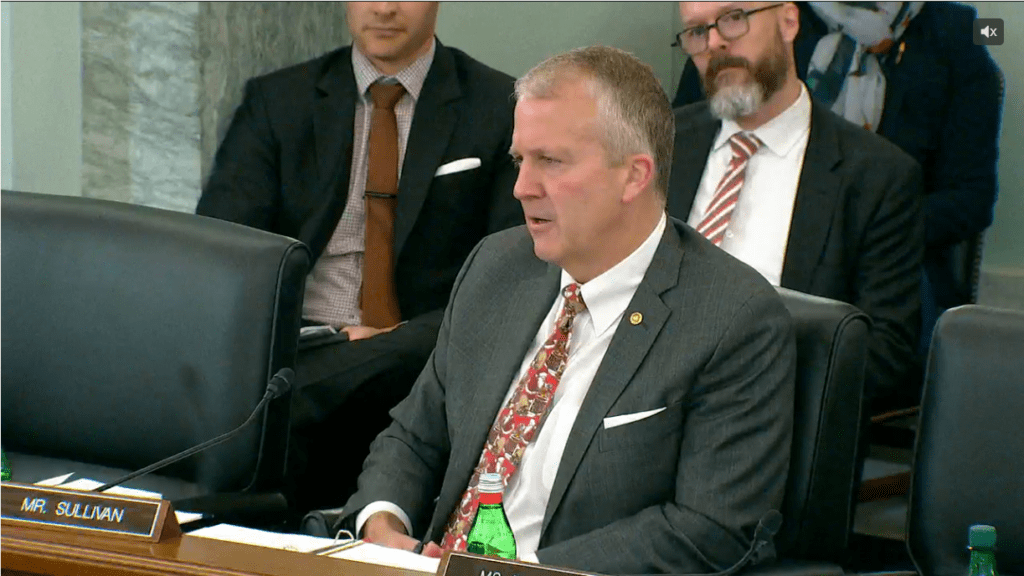A Senate Commerce subcommittee heard from small manufacturers this week and the biggest takeaways were worker shortages, keeping energy prices low, and debates over how reshoring production to the U.S. can work beyond pie-in-the-sky rhetoric.
“Manufacturing is central to America’s economic power and national security, and historically, we’ve led the world in the invention of and manufacturing of advanced technologies,” said one of the four witnesses, Dr. Kevin Lee, director at the National Institute for Innovation in Manufacturing Biopharmaceuticals. “We’ve lost our leadership position in manufacturing over the past few decades, and this is a threat to our economic prosperity and national security. We invent things here, but we make them elsewhere and import them.”
At the center of the Dec. 13 Senate hearing titled “Promoting and Investing in Small American Manufacturers” were two government programs, the Manufacturing Extension Program (MEP) and Manufacturing USA. They were seen as partial solutions to reshoring manufacturing. MEP is a public-private partnership with centers in all 50 states dedicated to serving small and medium-sized manufacturers. In 2021, MEP Centers interacted with 34,307 manufacturers, led to $5.2 billion in new client investments, and helped create or retain 125,746 jobs, according to the National Insitute for Standards and Technology, which runs MEP. Manufacturing USA, previously known as the National Network for Manufacturing Innovation, is a network of research institutes focused on developing manufacturing technologies through public-private partnerships among U.S. industry, universities, and federal government agencies.
These programs have existed for years, and reshoring never happened. But many in Washington believe the pandemic supply chain issues have changed the consensus view among American businesses. If not them, then it has changed the view in Washington.
“The supply shocks that our country faced over the last several years (is due to) how much our manufacturing resides outside of the United States,” said Ranking Member Dan Sullivan (R-AK) of the Subcommittee on Oceans, Fisheries, Climate Change, and Manufacturing. “I think it’s been an awakening for our country.”
“We’re going to send the United States into a ‘mighty sea of Coronavirus’ was one of these great subtle statements by the Chinese Communist Party officials about how they’re going to leverage key areas of manufacturing to potentially harm our nation. There is no American who wants to be in that kind of vulnerable position, and that is exactly what happened, and it’s something that we need to wake up to. I think one of the areas that we need to be focusing on is leveraging Manufacturing USA in the Manufacturing Extension Partnership programs, not just in the traditional areas of manufacturing in the United States, but in all parts of our country. I’m really interested in the ability to bring back manufacturing and be less reliant on adversaries, China being the number one in that category.” – Dan Sullivan (R-AK), Ranking Member, Senate Commerce Subcommittee hearing on Dec. 13, 2022.
Witnesses from the auto industry and representatives of the pharmaceutical industry warned of worker shortages and rising energy costs as severe roadblocks to reshoring efforts.
“We need to build the workforce to succeed. Then these can help to inform young Americans that manufacturing jobs are attractive, high-tech, clean, safe and offer family sustained wages,” said David Vasko, senior director for advanced technology at Rockwell Automation.
The National Association of Manufacturers estimates approximately 800,000 unfilled manufacturing positions in the country as of December. That number is projected to increase to 2.1 million by 2030. These are solid high paying careers, many of which do not require expensive college degrees.
Some researchers have referred to these worker shortages as “the demographic drought”.
Todd Zakreski, president of Husco Automotive, a mid-sized, minority-owned Wisonsin-based manufacturer for the auto industry, said MEP program expansion would train a vocational workforce that manufacturers need.
Senator Richard Blumenthal (D-CT) said the worker issue was a hindrance. “In my view, it is the biggest challenge of this country right now,” he said. “We can talk in very abstract terms about capital, about supply chains. But, if we don’t have people to make things or to implement the grand designs that companies may have, big companies but also small companies, we’re not going to have supply chains or manufacturing.”
Zakresky said it was hardest to find second and third-shift engineering talent. Again he referred to the importance of STEM programs in schools and business alliances working with students to get them interested in manufacturing. “There is a lot going on in this area,” he said, adding “But it doesn’t help us now.”
Senator Todd Young (R-IN) said his state was dependent on manufacturing for roughly a quarter of the economy and one out of ever six workers is employed in industry. “t is an important sector to our nation’s economic health, and our global competitiveness as well, to say nothing of national security. I have high hopes for the CHIPS and Science Act. But will it help small American manufacturers?”
Carrie Hines, CEO of American Small Manufacturers Coalition wasn’t so sure. She also referred to the MEP Program.
 “We need to really harness integration and leverage state and local resources into a more regional model so it can help support the semiconductor industry,” she said. “MEP is really the key program too be in a position to operate that supply chain intelligence network, because we are really at the ground floor with small manufacturers all across the country. We know their capabilities, and their certifications. We know what they can do, what they can produce, and what they can support.”
“We need to really harness integration and leverage state and local resources into a more regional model so it can help support the semiconductor industry,” she said. “MEP is really the key program too be in a position to operate that supply chain intelligence network, because we are really at the ground floor with small manufacturers all across the country. We know their capabilities, and their certifications. We know what they can do, what they can produce, and what they can support.”
Sullivan asked if reshoring more of the auto industry was possible.
Zakreski said that there are some parts of the automotive supply chain that businesses here do not want to make, or it hard to find engineers who can.
“We buy parts from overseas. We have to, because we have not been able to find people who want to make the investment to deliver the kind of quality and expectations that we have for the parts. So, we have to go overseas for those parts,” he said. “Part of the challenge will be to create an awareness among buyers that there are potential suppliers here who maybe can make what you need. Maybe MEP makes a database where somebody like us can use it and say, oh, wait a minute, there is somebody in North Dakota that can make this. We don’t know what exists. And on the other hand, it is tough if you have parts overseas and to move them back.”
Sullivan agreed with him; it is hard.
“Especially in the automotive industry, you have to go through tons of validation and extra work, and it can take a year to resource a part,” Zakreski said. “For a business, that is taking an awful lot of your technical resources away from you. It is taking away time from developing new business because you’re spending it now on trying to resource a part from overseas back to here, or make it here instead.”
“As you go deeper into the tiers of supply chains, not only do they get very complicated, but the supply chain for the products that we buy in the stores end up being intermingled in part of the same supply chain that also feeds our military. It is critical to think about how we can ensure that we have the capability to build local. I often have conversations about how are you going to prevent this technology from going overseas. And, at the end of the day, I don’t know that you can. What we can do as a country is ensure that we’re always going to be that heart of innovation, that wellspring of innovation, and that is going to attract the kinds of organizations, companies, and supply chain that we need for our own future.” – Dr. Kevin Lee, director at the National Institute for Innovation in Manufacturing Biopharmaceuticals, Senate hearing on Dec. 13, 2022.
Keeping Energy Costs Down
Witnesses said the U.S. should not follow in Europe’s footsteps on energy. Cheap sources of fuel, especially domestically produced fuel, including solar and wind made here rather than imported, was going to be a decisive factor when setting up shop.
Senator Sullivan sparked this debate.
“It’s critically important that we do our best to create low-cost reliable energy for manufacturers. As we’ve seen things being disrupted internationally, we’ve got to have that option,” Hines said.
SULLIVAN: And, if it’s domestically produced, all the better?
HINES: Of course.
Lee came at the energy issue through the lens of pharmaceutical manufacturing. Some European labs have been shut down temporarily, or had to raise prices due to high electricity costs.
“We want to be able to control our energy future,” Lee said. “The extent to which we can control that, then we can have that stability and that reliability through whatever.
SULLIVAN: And, again, mostly domestically to the extent we can.
LEE: Absolutely, absolutely. When it comes to manufacturing of biopharmaceuticals, it’s actually an industry that’s pretty risk-averse when it is thinking about where they are going to put their next laboratory.
Lee told the Senate that workforce availability is also an important part of the equation when making the decision of where to invest in new production.
“There might be tax and other financial incentives to consider,” he said. “But for sure, the stability of energy, the stability of the workforce, the stability of policies, all drive a lot of that decision-making.”













